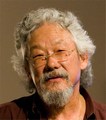“A Guide to Water-Wise Land Development in the Comox Valley” – Joint Staff Training Workshop initiates educational process for communicating ‘design with nature’ expectations in urban watersheds

“Healthier watersheds can handle high and low rainfall better, and are therefore more resilient to the coming changes,” stated Kris La Rose. “From the regional perspective, mitigation of flood risk, water conservation and restoration and protection of our streams and rivers are all key priorities. The increase in extreme weather is highlighting the need to build better resiliency into the natural systems that we all rely so heavily upon.”










